Sights of Ostashkov
Around Ulitsa Volodarskogo
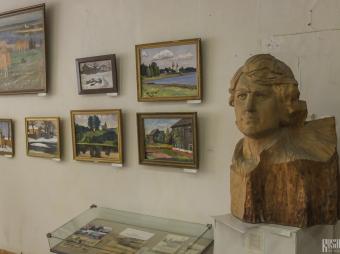
Art Gallery
- 32 Ulitsa Maksima Gorkogo
In the west of the city at the very end of Ulitsa Rabochaya is the Yubileyny House of Culture which also houses the Ostashkov Art Gallery. The small gallery predominantly displays the work of local artists which often features scenes of Ostashkov. The back halls hold various temporary exhibitions. Read more »
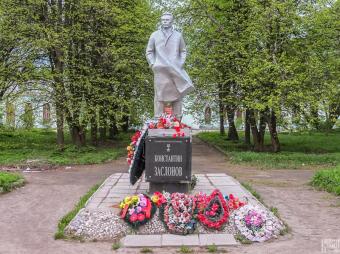
Konstantin Zaslonov Monument
- Ulitsa Privokzalnaya
Just outside Ostashkov Railway Station is a statue of the partisan war hero Konstantin Zaslonov. Zaslonov was born in Ostashkov and later became a railway worker. During the Second World War Zaslonov led a partisan group in Belarus, which was extremely effective in blowing up German steam locomotives. Zaslonov was eventually killed in battle in 1942. His body was hidden by locals to protect it from the Nazis who had offered a reward for him dead or alive. The house where… Read more »
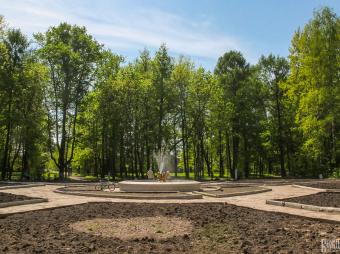
Park Svobody
- Ulitsa Rabochaya
Ostashkov's central park is known as Park Svobody (Freedom Park). The park was developed after the Revolution, previously the city's central church and trading rows were situated here. At the back of the park there is a pond with a little island in the centre. Standing on the island is a small derelict wooden chapel. Bell Tower of the Transfiguration of the Saviour Church Previously the Transfiguration of the Savour Church was located here, but this was demolished in the… Read more »
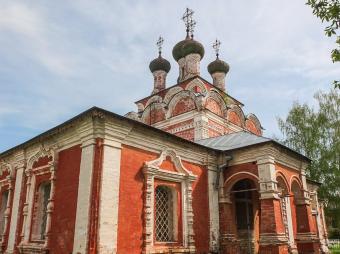
Regional Museum (Trinity Cathedral)
- 4 Ulitsa Pechatniki
Ostashkov's Regional Museum is located in what was once the Trinity Cathedral, which was built between 1685 and 1697 in the baroque style. For such a small city, the museum is rather good with lots of information on the city and its citizens, including mock-ups of a traditional Russian izba (wooden house), a merchant's house and a blacksmiths. The bell tower is also part of the museum and you can go to the top to get great views of the city as well as look at the small… Read more »
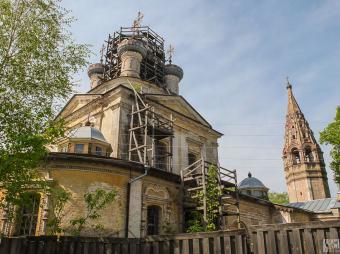
Resurrection Cathedral
- 9 Ulitsa Volodarskogo
Just next to the Trinity Cathedral which is now the Regional Museum is the Resurrection Cathedral and both cathedrals were built around the same time, although this one is slightly older having been constructed between 1677 and 1689. Like its neighbour it also has a bell tower and the Resurrection Church's is topped with a tent dome. After the Revolution the church was closed and allowed to fall into disrepair. As of 2014 it is still undergoing restoration work. Read more »
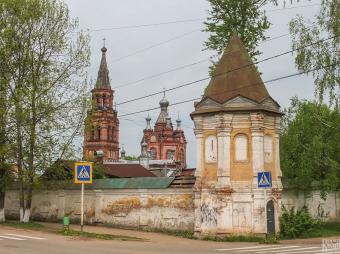
Znamensky Convent
- 1 Ulitsa Rabochy Gorodok
The Znamensky Convent was founded in approximately 1673 but today it only has one church - the Ascension Cathedral. Most of the convent's walls, which date from the mid-19th century, also survive but houses are now located within the walls along with the cathedral. Ascension Cathedral The Ascension Cathedral is probably the most beautiful church in Ostashkov and it owes its Russian revival architectural style to the fact that the cathedral was substantially rebuilt in 1868… Read more »
North of City
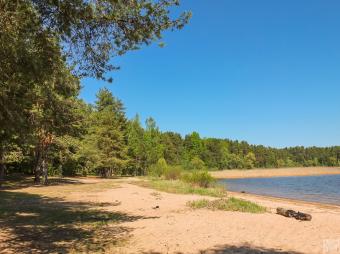
Klichen Island
- Klichen Island, north of city
Just to the north of Ostashkov is Klichen Island which is now connected to the mainland via a dam. Klichen was first mentioned in chronicles in 1371 as a border town of the Moscow Principality. This town was destroyed by Novgorodians in 1393 and according to legend the sole survivor - a man named Ostashko - established a new settlement on the mainland to the south which became known as Ostashkov in his honour. Today the island is one of the most popular places among locals who… Read more »
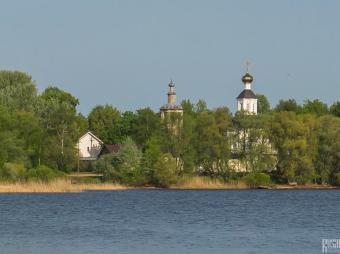
Zhitenny Convent
- 3 Polyostrov Zhitnoe
Between central Ostashkov and Klichen Island is Zhitnoe Island which is now a peninsular as it has been connected to the mainland via a dam. Situated among the trees of the island is the Zhitenny Convent. It was founded in 1716 as a monastery and the first stone construction work took place in 1737 with the construction of its main cathedral - the Our Lady of Smolensk Cathedral - which was completed in 1742. This was joined by Ss John the Theologian and Andrew's Church in 1768. … Read more »
Settlement of Svetlitsa

Nilo-Stolobenskaya Hermitage
- Stolobny Island, near the settlement (posyolok) of Svetlitsa
- http://nilostolobenskaja-pustyn.ru
The beginning of the Nilo-Stolobenskaya Hermitage are connected with a 16th century monk call Nil who has since been canonised as St Nilus (Nil) of Stolobny. In 1515 Nil quit his monastery to live a life in prayer in a remote forest surviving on grass and acorns. According to legend when robbers once came to rob him, Nil simply approached them with an icon and the robbers are said to have run off in fear. Nil's reputation as a greatly spiritual man grew and more and more people… Read more »

 History
History